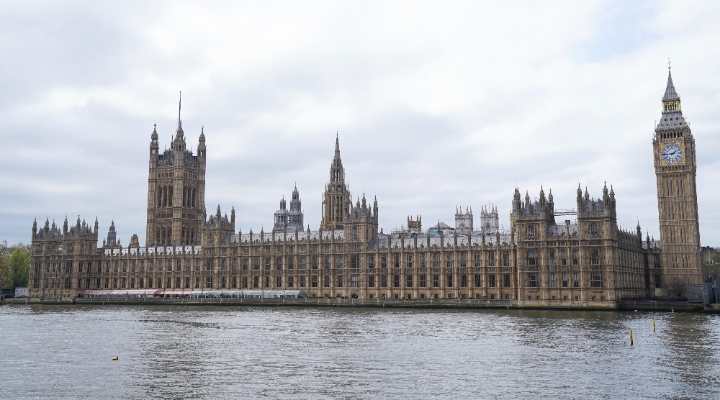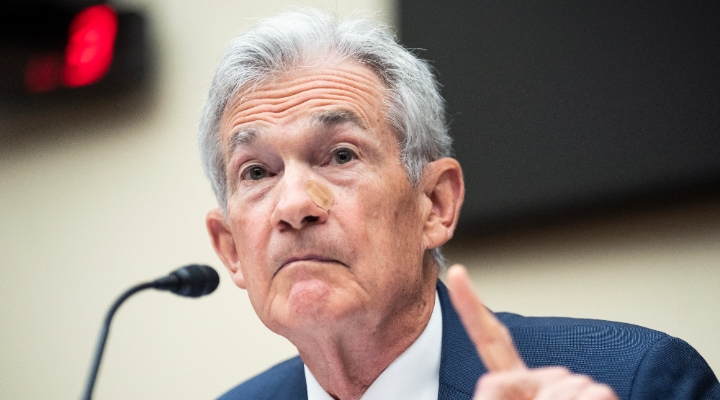
US Hiring in September proved far stronger than economists expected, making it more likely that the Federal Reserve will opt for a smaller interest rate cut in November than had been anticipated just a few weeks ago.
The US economy added 254,000 jobs in September, according to the latest Bureau of Labor Statistics report, which also revised up previous estimates for new job creation in August and July. Meanwhile, the unemployment rate ticked down to 4.1% in September from 4.2% in August.
Economists forecast the economy would add 140,000 jobs in September, which would have been little change from the originally reported increase for August. Meanwhile, the unemployment rate was forecast to remain unchanged at 4.2%.
The September jobs report "means the Fed is almost certain to cut by 25 basis points rather than make another 50-basis point cut at its next meeting," says Preston Caldwell, senior US economist at Morningstar.
"Overall, the report takes some of the edge off the jobs data, which had previously shown an alarming uptick in unemployment and decelerating nonfarm payroll employment growth. We're unsurprised that the jobs data has veered in a more positive direction. As we commented with previous months' reports, it would be surprising for the labor market to lurch off a cliff even while economic activity grew robustly. Almost always, the labor market is a lagging indicator."
September Jobs Report Key Stats
1. Total nonfarm payrolls grew by 254,000 in September versus an upward-revised 159,000 in August.
2. The unemployment rate fell to 4.1% from 4.2% in August.
3. Average hourly wages fell by 0.1% to $34.20 after rising 0.3% in August.
Strong Hiring Across September Report
Caldwell notes that three-month growth for nonfarm payrolls now stands at an annual rate of 1.4%, versus 0.9% before the report. "That improvement is thanks to strong growth in September, along with upward revisions to July and August," he says.
"This is the first time since March 2024 we've seen significant upward revisions in prior months' data. Several reports since then have featured large downward revisions, including last month's August report."
The strong reading on hiring was matched by the data used to calculate the unemployment rate, known as the household survey. This is separate from the establishment survey, which produces the nonfarm payroll figures. "Importantly, the household survey also registered major job gains, with its three-month growth rate in employment improving to 2.2% annualized," Caldwell says. "With strong job gains reported in the household survey, we'd expect the unemployment rate to fall. And indeed, it did drop to 4.1% in September after peaking at 4.3% in July."
Healthcare and Leisure Driving Job Gains
The BLS noted that hiring "continued to trend up in food services and drinking places, health care, government, social assistance, and construction."
Looking over the last three months, "at the industry level, the composition of job gains remains quite skewed," Caldwell explains.
"Healthcare and leisure industries accounted for around two-thirds of the job gains in the past three months. The rest came from government, as well as the construction and real estate industries."
He continues: "Hiring in industries composed of largely white-collar jobs—including finance, professional services, management, administration, and technology—has been tepid, growing collectively at a 0.5% year-over-year rate. We've seen strong productivity gains in these industries over the past few years, which reduces the need for workers. Artificial intelligence tools may be adding to these gains."
Wages Positive For Inflation Outlook
Average hourly wages fell by 0.1% to $34.20 after rising 0.3% in August, according to the BLS.
"Wage growth has accelerated a bit, up to 4.0% year over year in September, up from 3.6% year over year back in July, but this is still far below the peak of 5.9% in January 2022," Caldwell says. "With economywide productivity growing strongly—up 2.6% year over year as of the second quarter 2024, by our estimates—this rate of wage growth is not inconsistent with hitting 2% inflation."
Fed Seen Cutting Rates by Quarter Point in November
In the wake of the September jobs report, expectations have largely vanished for the Fed making a second half-percentage point cut in its interest rate target range when officials next meet in November. The Fed's current target range is 4.75%-5.00%.
"With more data like this, assuming that the data on economic activity and financial conditions holds up, we're not going to see any more 50-basis-point cuts from the Fed," Caldwell says.
"The Fed will merely cut by 25 basis points, and we could even see a skip meeting here or there in 2025. If the data on economic activity and jobs doesn't weaken, we'd likely see the Fed cease its campaign of rate cuts at a level above the current FOMC projections, which call for a year-end 2026 federal-funds rate of 2.9%. But we expect economic growth to weaken over the next year, producing a renewed slowdown in the job market. Combined with normalizing inflation, that will keep the Fed on a path of aggressive interest rate cuts."
The author or authors do not own shares in any securities mentioned in this article. Find out about Morningstar’s editorial policies.





























